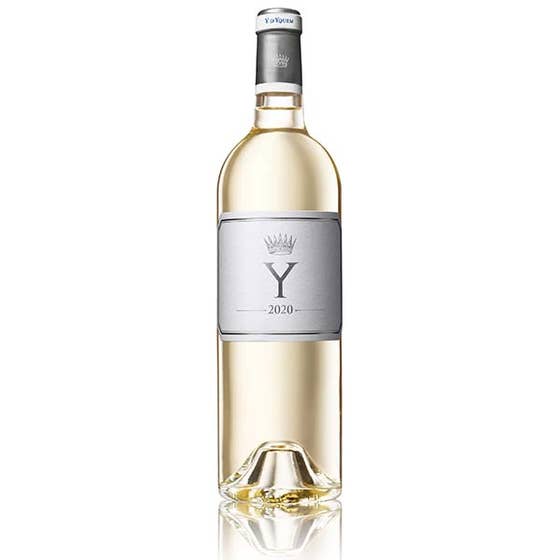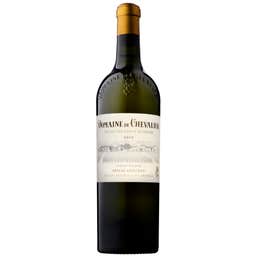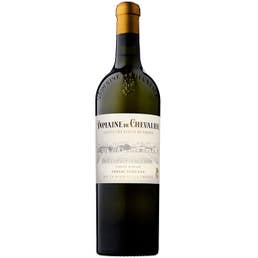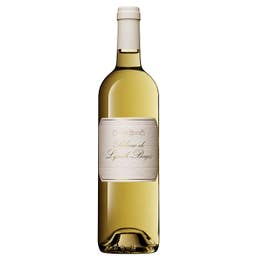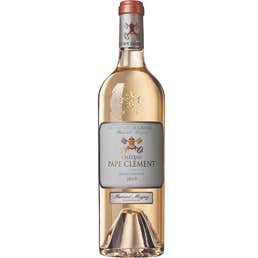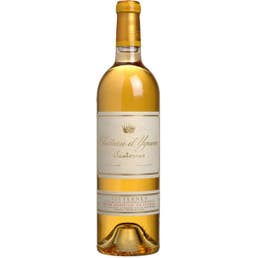Y Château d'Yquem 2020
Other Vintages We Offer:
• Domaine: Château d'Yquem
• Appellation: Bordeaux Blanc
• Classification: Superior First Growth, Premier Cru Supérior in 1855
• Origin: Left Bank, Bordeaux, France
• Varietals: Sauvignon Blanc 75%, Sémillon 25%
Chateau d'Yquem is a world-renowned winery located in the Sauternes region of Bordeaux, France. It is particularly famous for its sweet white wines, which are made from grapes affected by Botrytis cinerea, a fungus commonly known as noble rot.
The history of Chateau d'Yquem dates back to the middle ages. The King of England, Richard I, also known as Richard the Lionheart, once owned Chateau d'Yquem. Richard acquired the property in the late 12th century, during his reign as King of England from 1189 to 1199. He was known for his love of wine and reportedly praised the quality of the wines produced at Chateau d'Yquem, which were already famous at the time. However, Richard did not own the property for long, and it eventually passed through several different owners before being acquired by the Lur-Saluces family in the 18th century. The family owned and operated the winery for more than 200 years, during which time they established a reputation for producing some of the world's finest sweet wines. Chateau d'Yquem is currently majority owned by LVMH Moët Hennessy Louis Vuitton, a French luxury goods conglomerate. LVMH acquired the stake in the winery in 1999 from various members of the Lur-Saluces family, which retains a minor interest in the producer after more than two centuries.
The winery's vineyards cover around 125 hectares, with a mix of grape varieties, including Semillon and Sauvignon Blanc. The unique climate of the Sauternes region, with its misty mornings and warm, sunny afternoons, creates ideal conditions for the development of noble rot, which is necessary for the production of the winery's signature sweet wines. Sauternes production is a risky business– as nature can be incredibly fickle and the cultivation of botrytis is very much left to chance. If the rot does not infect enough of the vineyards, high-ranking producers like Château d’Yquem will abstain from crafting a vintage all together. Because of this, each successful vintage of Sauternes is a treasure meant to be celebrated in its own right, and producers that achieve the quality level of Château d’Yquem are truly remarkable vignerons.
Château d’Yquem is blessed with some truly exceptional terroir, and it is the only producer that is classified as a First Growth Premier Cru Superieur within the appellation. Interestingly enough, Chateau d'Yquem's vineyards are known for their unique blue clay soils, the same blue clay instrumental to the success of some legendary Pomerol wines such as Château Petrus, Trotanou, and Clos du Clocher. Blue clay, also known as "mystique clay," is a rare type of soil found only in a few select locations in the Sauternes region of Bordeaux, where Chateau d'Yquem is located. The blue clay is particularly well-suited to the cultivation of the Semillon grape, which is one of the primary varieties used in the production of the winery's sweet wines. The clay helps to regulate moisture levels in the vineyard, which is important for the development of noble rot, the fungus that contributes to the unique flavor profile of Chateau d'Yquem wines. Overall, the blue clay soils of Chateau d'Yquem are considered a key factor in the winery's success and reputation for producing some of the world's finest sweet wines.
Chateau d'Yquem wines are highly sought after and can command high prices at auction. They are known for their complexity, richness, and balance, with flavors of honey, apricot, and vanilla, among others. The winery produces both a grand vin and a second wine, and only the best vintages are bottled as grand vin. Château d’Yquem is a wine that any person should experience at least once. It is surprisingly versatile, and though distinctly honeyed, it pairs with a plethora of dishes. Sauternes is a stunning alternative to dry wines when paired with poultry dishes and is exceptional with cheeses of any kind. The wine’s sweetness contrasts beautifully with exotically flavored and spicy dishes as well.
Y is only made in select vintages. The first vintage of this dry white wine was made in 1959. The berries for Y are picked prior to the harvesting of vines for the Sauternes. Y is typically a mixture of 80% Sauvignon Blanc and 20% Semillon. The Semillon is picked just prior to developing noble rot for this wine. Y is a rare find, as less than 1,000 cases are produced each year. Y has a dry steeliness from Sauvignon Blanc coupled with the richly honeyed qualities of Semillon.
Tasting Notes
"Give this 5 or 10 minutes to open in the glass because it has a pretty serious structure, deftly weighted, full of white pear, quince and apricot pit, balanced by savoury rosemary, straw and fennel notes, successful and totally moreish. A vintage that had the freshness necessary for great white wines in Bordeaux, and Y pulls away from the pack with this wine.”Hold +5 years or carafe 1 hour” - Jane Anson, Decanter, Ratings: 97
With an annual production of 10,000 bottles in a normal year, Y (pronounced "ee-grek" in French) is a rare wine. The production of 2020 vintage was cut by half. It is made from the same outstanding terroir and the same vines as Château d'Yquem. Although work in the vineyard is every bit as meticulous, the grapes are picked and the wine made in a different way.
Y was formerly made at the end of the harvest, with the last bunches left on the vines. These grapes, affected to varying degrees by Botrytis cinerea, but never with more than 15% potential alcohol, resulted in a very unusual wine. This explains why it has always been produced in small quantities and on an irregular basis since 1959. Y changed starting in 1996, but without compromising its unique character, to be more in tune with the times by displaying the qualities of freshness and crispness – essential for a modern great white wine. It was decided in 2004 to make Y every year. It is thus by deliberate choice that we now harvest certain plots of Sauvignon Blanc at the beginning of the vintage, making sure to pick perfectly ripe bunches. These are completed by Sémillon grapes picked just at that fleeting stage when the grapes have reached maximum ripeness, botrytis has just appeared, and the skins have turned a pinkish colour. This is the precise moment when this grape variety's tannins are soft enough for the aromatic potential of the best plots of clay soil to come through.
The wine receives close attention all during fermentation: light, precise pressing as well as temperature-controlled must racking and alcoholic fermentation in a new aesthetically pleasing, state-of-the-art vat room set aside just for this wine. The end of fermentation and ageing on the lees take place in barrels. Only one third of these are new, and the lees are regularly stirred (bâtonnage) for ten months.
The final blend is made after tasting. It usually consists predominantly of Sauvignon Blanc and a few lots of Sémillon. (credit: Château d'Yquem)
Winemaker's Notes
“In light of the extraordinary weather conditions in 2020, picking the grapes for Y started on the 13th of August.
This was the earliest harvest date ever recorded at Yquem.
We began with the Sauvignon Blanc grapes. They were picked at their optimum aromatic ripeness in two passes, the first one starting on the 13th and the second ending on the 19th of August. Thus, we preserved their acidity, which is essential to producing well-balanced wines.
We waited for the Sémillon grapes to reach peak ripeness, eventually harvesting them when their skins started to become thinner, on the 27th of August.
This is when the 2020 harvest of Y was completed."
| LWIN | 1017744 |
|---|---|
| Stock Status | In Stock |
| Appellation | Bordeaux |
| Vintage | 2020 |
| Brand | Château d'Yquem |
| Shipping Weight | 3.000000 |

